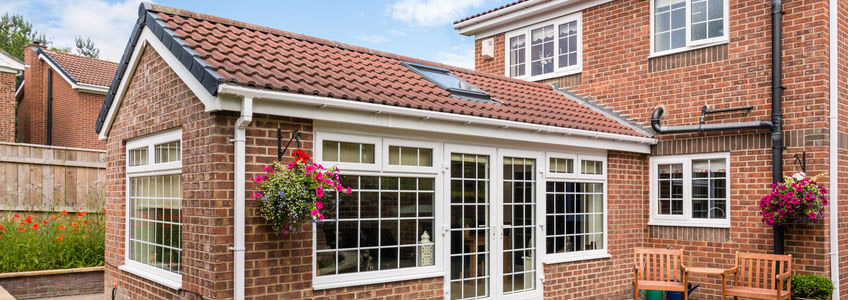Of all the assets one can own, buildings are part of the most significant. Real estate, buying lands, and similar ventures are cost-effective and can survive you for a long time even after your death. If you own a building, then it is natural to feel the need to refurbish it and always keep it classy as it can only appreciate. However, as a homeowner, there are rules you must follow; else, you will be bombarded with legal battles and lose your prized possessions. One of those building codes is planning permission, and it is essential that you know how far you can build without it.
What Is Planning Permission?
It is a vital document, portrayed as a building or construction permit, that you need before any expansions can begin on your property. This approval process is required for particular renovations or remodelling in specific regions.
Note that not all buildings require planning permission. But you should confirm from a legal perspective. You can either appoint a competent law firm or consult your lawyer if you have any. While you see to that, we have minimised your chores by compiling a list of what you can build without planning permission.
By utilising this compilation, you can proceed with any urgent extensions you need to add to your buildings. Perhaps, you are a businessperson, and you want to add a swimming pool to your construction. With this list, you can know the UK buildings to renovate without any planning permission. However, it is not always that simple because there are specific measurements you must not exceed, but everything will be revealed in this article. Dive in!
1. What Do Conservatory Extensions Have On You?
Imagine a UK building such as a bungalow without a conservatory on it; you immediately want to construct one, right? But you must confirm planning permission first! When you envision a building in the UK, you can’t help but picture a conservatory alongside. The building codes for conservatories are similar to the ones for a single-storey extension. You have to consider some measurements to know how far can you extend without planning permission.
Without the planning permission, your building can be acknowledged as permitted development if you use the following guidelines:
- You must use materials that complement the prior construction
- The extension should not be superior to the dominant elevation
- The eaves must not be above 3m, and the height should not transcend 4m. This measurement only applies when it is not beyond 2m of whatever boundary.
- For the side extensions, the expanse of the conservatory should not be more than half the size of the original building. However, in places such as Area of Outstanding Natural Beauty (AONB) and conservation areas (i.e. Article 1(5) Land), side extensions are prohibited.
- Rear additions don’t have as many challenges as the side extensions. The requirements for a terrace or semi-detached house is 3m in depth while the measurement for a detached house is 4m or less.
Note that for the extension to be a permitted development, it must be joined to the original building, and not be a successive extension.
2. How Meticulous Should You Be With Multi-Storey Extensions?

The planning permission guiding conservatories are similar to two-storey extensions, save for one more building code you mustn’t do without. Like the conservatory, the rear extensions can also be permitted advancement. However, 3m or less is how far you can build out without planning permission. Furthermore, the extension must be positioned 7m away from the posterior boundary, nothing more. In a case where the side of the addition isn’t outside 2m of the quarter boundary, then the height of eaves should be 3m.
3. Installation Of Pavements
This case majorly applies to homeowners that want to pave over their front garden. The need for planning permission depends on two factors, which are the use of permeable and impermeable materials. If it is permeable, then your construction is entirely a permitted addition. Nevertheless, if it is impermeable, the pavement must not surpass 5 square metres.
4. How Far Can I Go With My Loft Modifications?

Loft conversions are one of those renovations you can build without planning permission, but what are the restrictions? One thing with building without planning permission is that there are limited things that you can do. For instance, there are different specifications for the total amount of cubic permitted for loft modifications. There is a limitation to how big the building can be without planning permission. According to PD, the standard measurement is 40m³.
For increased headroom in the loft area, PD permits the implementation of dormer windows. However, the conditions are:
- The windows must not be above the most advanced side of the current roof slope
- Neither should they be over the roof plane on the original building.
5. What To Do With Roof Adaptation Without Planning Consent?
Firstly, if your location is in a Conservation Area or an AONB, then do not proceed! If not, then you can progress with the modification, but it shouldn’t be above 150mm or 15cm (start your measurement from the plane of the roof).
6. The Limitations Of External Cladding Adjustments
External cladding without planning permission is not approved in particular regions such as:
- AONBs
- The Broads
- National parks
Whether it is pebbledash, timber, stone, plastic, tiles, or render, you cannot clad any in the above-listed areas. However, in other regular places, you are permitted to repair, replace, and paint. Note that the new design must blend in with the initial display.
7. How Can I Convert Commercial Properties Without Planning Consent?
Renovating a commercial, agricultural or industrial building can be done without planning permission. You can convert any of this kind of buildings to residential ones provided you have approval for Listed Buildings. Also, you are required to complete the Prior Notification process if it is an agricultural property.
8. How Can I Build A Basement Without Planning Permission?
The inclusion of a basement to your property is an extension, but it is not the same in all areas. According to Article 4 Directions, councils in major urban areas can attempt to eliminate planning permission. While it is still under assessment, all construction of basements should be kept on hold.
9. What Is The Best Way To Add Solar Panels And Wind Turbines Without Permitted Development Rights?

The condition is that the solar panel additions must not project more than 20cm away from the wall slope or roof. Also, the eminent side of the panel shouldn’t be higher than the paramount side of the roof, exclusive of the chimney. It is advisable not to use free-standing panels because they are not qualified due to size and nearness to the boundary. The restrained areas for solar panels are conservation areas and listed buildings.
If they are temporary, wind turbines don’t require permitted development rights, but permanent ones do.
10. What Outbuildings Can I Have Without Planning Permission?
Outbuildings are one of the properties you can build without planning permission. In any UK jurisdiction, PD permits the construction of new single-storey buildings without planning permission. The only criterion is that it must be inclined to the original house.
Furthermore, it must be at the back of the main building. There are also restraints to the heights allowed. For instance, in conservation areas, national parks, and AONBs, they shouldn’t be higher than 10 square metres if it is 20m beyond the building.
Examples of outbuildings are gym, swimming pool, sheds and more.
11. Is it Possible To Erect Gates, Fencing, And Walls Without Planning Permission?

Addition of gates, fences, and walls are feasible as long as you are watchful of the assigned height limitations. If the space faces a highway, the maximum amount of height is 1m, while there must be 2m threshold around. However, this permitted development rights do not apply for listed buildings.
12. Are Driveways And Patios Permitted Developments?
In most UK regions, building or changing driveways and patios is regarded as permitted addition. Although, if you aim to extend beyond 5 square metres of the front garden, you must use a permeable surface. We suggest either block paving or gravel. Otherwise, you can project any potential flow of liquid (like rain) to a flower bed or preferably, a lawn. That way, it can go down the drain easily. For the patio, planning permission requires that the height should not surpass 400mm below and above the current ground level.
13. Is Soft Landscaping Permitted Development?
When it comes to planning permission, almost all garden processes are approved. However, the primary challenge is that several trees are safeguarded by preservation laws. Therefore, you will need the council’s permit for deforestation.
14. Are Window Modifications Permitted?
As long as the original building’s materials aren’t changed, most window adjustments are permitted developments. Nonetheless, the rules of extension apply to bay windows. Also, you must apply obscured glazing to side windows due to privacy reasons. Despite these facts, you must double-check planning permission first.
15. Can I Install Decking Without Planning Permission?
Most deck installations now require planning permission. Nevertheless, it is still possible to install decking without permitted development rights provided the height is below 30cm.
What Happens If You Build Without Planning Permission?
If you build without planning permission or at least, according to the guidelines, that constitutes a planning breach. This could incur a lot of expenses as you will need to provide your local council with a retrospective application. The worst case scenario is that you might have to bulldoze the entire building.
Therefore, it is advisable to be careful.
In Conclusion
It is important that you follow each of the guidelines we provided for you because failure to do so has unpleasant, dire consequences.

